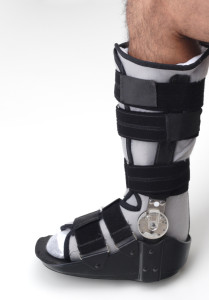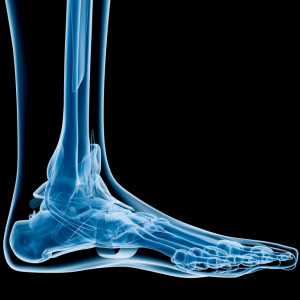
FIND A CERTIFIED LOCAL NEW JERSEY PODIATRIST
Reviewed by AOSMI’s Trained Foot and Ankle surgeons, Dr. Allison Dewaters and Dr. Wesley Nesbit.
Our feet are constantly under stress, so it’s no wonder that 80 percent of us will have some sort of pain or disability that affects our quality life. Many factors affect the condition of our feet, from activity level to occupation to health conditions and foot injuries. However, foot pain shouldn’t keep you from enjoying life the podiatry doctors at the Advanced Orthopedics and Sports Medicine Institute are ready to provide you with exceptional care to keep you on your feet.
Common Conditions Treated By Podiatrists at AOSMI
 While there are many different types of podiatry, including diabetic podiatry and sports podiatry, the most common conditions treated by our doctors and surgical podiatrists are:
While there are many different types of podiatry, including diabetic podiatry and sports podiatry, the most common conditions treated by our doctors and surgical podiatrists are:
- Sprains and strains of the foot and ankle
- Foot and leg cramps
- Foot and ankle arthritis including joint replacement
- Plantar fasciitis and heel spurs
- Athlete’s foot and excessive sweating
- Bunions, hammer toes, and foot deformity
- Corns, calluses, plantar warts, and ingrowing toenails
- Adult and pediatric flat foot
- Achilles tendinitis and ruptures
- Fractures and traumatic injury
- Diabetic foot care and charcot reconstruction
- Wound healing and limb salvage
NON-OPERATIVE PODIATRY TREATMENTS

Most foot and ankle conditions can be treated without the need for invasive surgical procedures. Dr. Alison DeWaters is a board-certified, podiatric foot and ankle surgeon at AOSMI who specializes in complete foot and ankle care with services ranging from diabetic foot care and orthotics to advanced reconstructive surgery of the foot and ankle. Dr. Wesley Nesbit is a podiatric foot and ankle surgeon at AOSMI who provides comprehensive non-surgical and surgical foot and ankle care through forefoot and rearfoot surgeries, ankle trauma treatment, and minimally invasive techniques.
Non-operative treatment options offered by AOSMI podiatrists include:
- Bracing
- Bracing: Bracing involves the use of specially designed devices to provide support, stability, and alignment to the foot or ankle. These braces can help alleviate pain, promote healing, and prevent further damage by controlling motion and redistributing pressure.
- Injections, including orthobiologics and Steroids
- Injections, including orthobiologics and Steroids: Injections of orthobiologics, such as platelet-rich plasma (PRP), and steroids can provide targeted relief by reducing inflammation and promoting tissue healing. These injections are often used to address conditions like plantar fasciitis and tendinitis.
- Ultrasound Therapy
- Ultrasound Therapy: Ultrasound therapy uses high-frequency sound waves to penetrate deep tissues and stimulate blood flow, which can aid in reducing pain, inflammation, and promoting tissue healing in certain foot and ankle conditions.
- Medication Management
- Medication Management: Medications, including oral anti-inflammatory drugs and pain relievers, can be prescribed to manage pain, inflammation, and discomfort associated with various foot and ankle issues.
- Damage Tissue Regeneration – EPAT
- Damage Tissue Regeneration – EPAT: EPAT (Extracorporeal Pulse Activation Technology) is a non-invasive treatment that uses pressure waves to stimulate tissue regeneration and promote healing. It is effective in conditions like plantar fasciitis and Achilles tendinitis.
- Physical Therapy: Our state-of-the-art Physical Therapy center offers strength training, flexibility, and balance training.
- Physical Therapy: Our state-of-the-art Physical Therapy center offers customized exercise programs aimed at improving strength, flexibility, and balance. Physical therapy plays a crucial role in rehabilitation and recovery from foot and ankle injuries or conditions.
COMMON SURGICAL PODIATRY PROCEDURES
 Once all nonsurgical podiatry treatments have been exhausted, our surgical podiatry team will suggest and proceed with the appropriate surgical intervention necessary for your symptoms. Dr. Alison Dewaters has special interest in wound healing, amputation prevention and limb salvage. With a focus on surgical diversity, Dr. Nesbit is experienced in performing various foot and ankle procedures, including forefoot and rearfoot surgeries, ankle trauma, and minimally invasive techniques. Dr. Dewaters’ and Dr. Nesbit’s goal has always been to help bring their patients back to full activity, while providing the best medical and surgical care possible. Contact the podiatry doctors at AOSMI today to schedule an appointment and receive the podiatric care you need.
Once all nonsurgical podiatry treatments have been exhausted, our surgical podiatry team will suggest and proceed with the appropriate surgical intervention necessary for your symptoms. Dr. Alison Dewaters has special interest in wound healing, amputation prevention and limb salvage. With a focus on surgical diversity, Dr. Nesbit is experienced in performing various foot and ankle procedures, including forefoot and rearfoot surgeries, ankle trauma, and minimally invasive techniques. Dr. Dewaters’ and Dr. Nesbit’s goal has always been to help bring their patients back to full activity, while providing the best medical and surgical care possible. Contact the podiatry doctors at AOSMI today to schedule an appointment and receive the podiatric care you need.
Frequently Asked Questions about Podiatry Care
What is the most common problem treated by a podiatrist?
One of the most common problems treated by a podiatrist is plantar fasciitis, a condition characterized by inflammation and pain in the plantar fascia (a ligament that runs along the bottom of the foot). Other common issues include ingrown toenails, bunions, corns, calluses, and various types of foot and ankle injuries.
What is a podiatrist?
A podiatrist is a doctor of podiatric medicine who specializes in the diagnosis, treatment, and prevention of conditions related to the foot, ankle, and lower extremities. They are trained to provide both surgical and non-surgical care for a wide range of foot and ankle problems.
What does a pediatric podiatrist do?
A pediatric podiatrist specializes in diagnosing and treating foot and ankle conditions in children. They address issues such as flat feet, walking abnormalities, pediatric sports injuries, and congenital deformities. Pediatric podiatrists aim to promote healthy foot development and address any problems that may impact a child’s mobility and overall well-being.
How can a sports podiatrist help my foot pain?
A sports podiatrist is trained to diagnose and treat foot and ankle injuries and conditions that are common among athletes and active individuals. They have expertise in biomechanics, gait analysis, and sports-related foot problems. A sports podiatrist can provide customized treatment plans, including orthotics, physical therapy, and footwear recommendations, to help alleviate foot pain and improve athletic performance.
What can a podiatrist do for diabetic neuropathy?
A podiatrist plays a crucial role in managing diabetic neuropathy, a condition that affects the nerves in the feet and legs due to diabetes. They can provide regular foot examinations, nerve function tests, and guidance on foot care practices to prevent complications such as ulcers and infections. Podiatrists also educate diabetic patients on proper footwear, skin care, and self-monitoring to minimize the risk of serious foot issues.
Do podiatrists treat ankles?
Yes, podiatrists are trained to treat not only the feet but also the ankles and lower legs. They diagnose and treat various ankle conditions, such as sprains, fractures, tendonitis, and arthritis. Podiatrists can provide comprehensive care for the entire lower extremity, ensuring optimal foot and ankle health.







